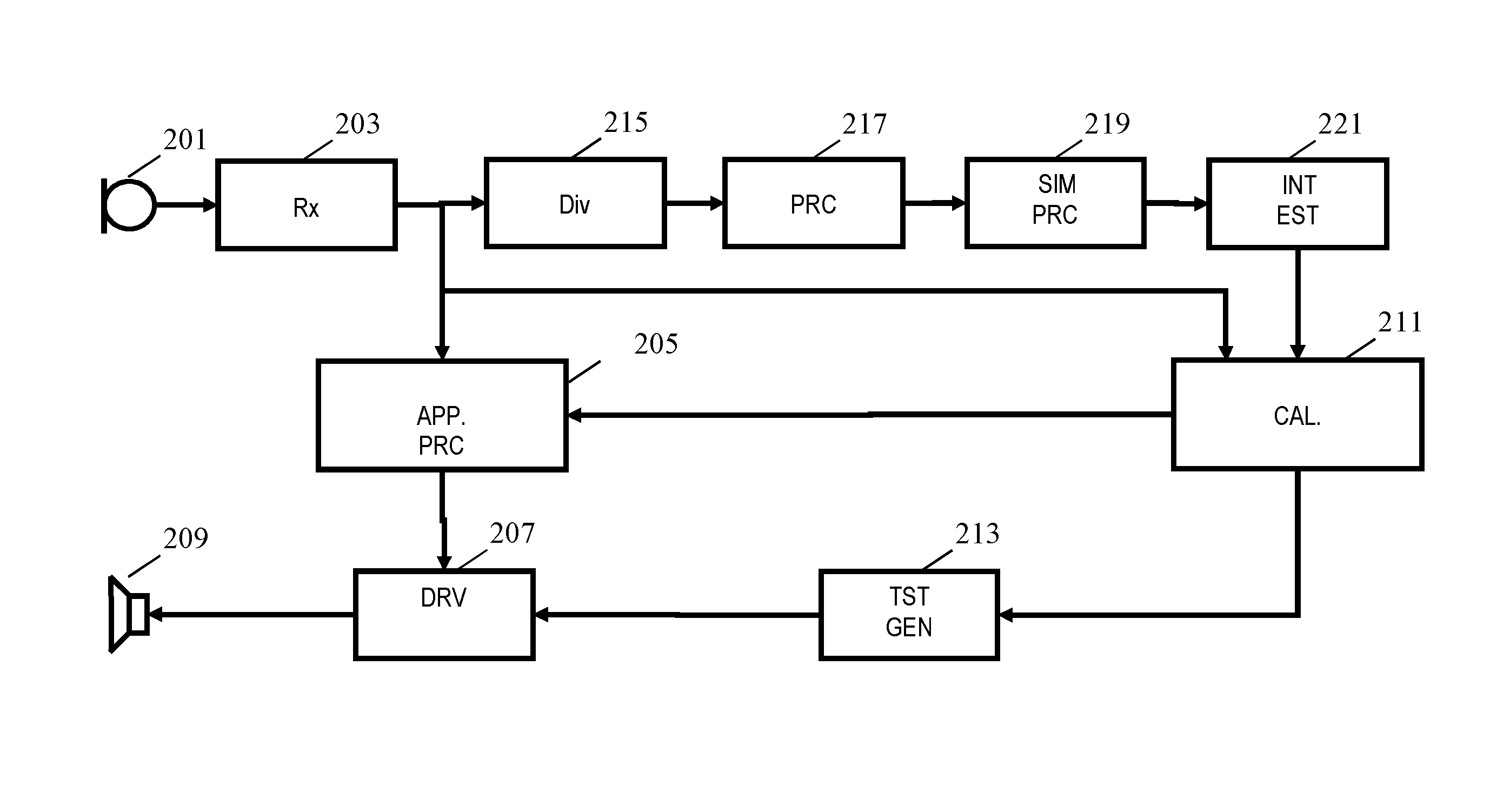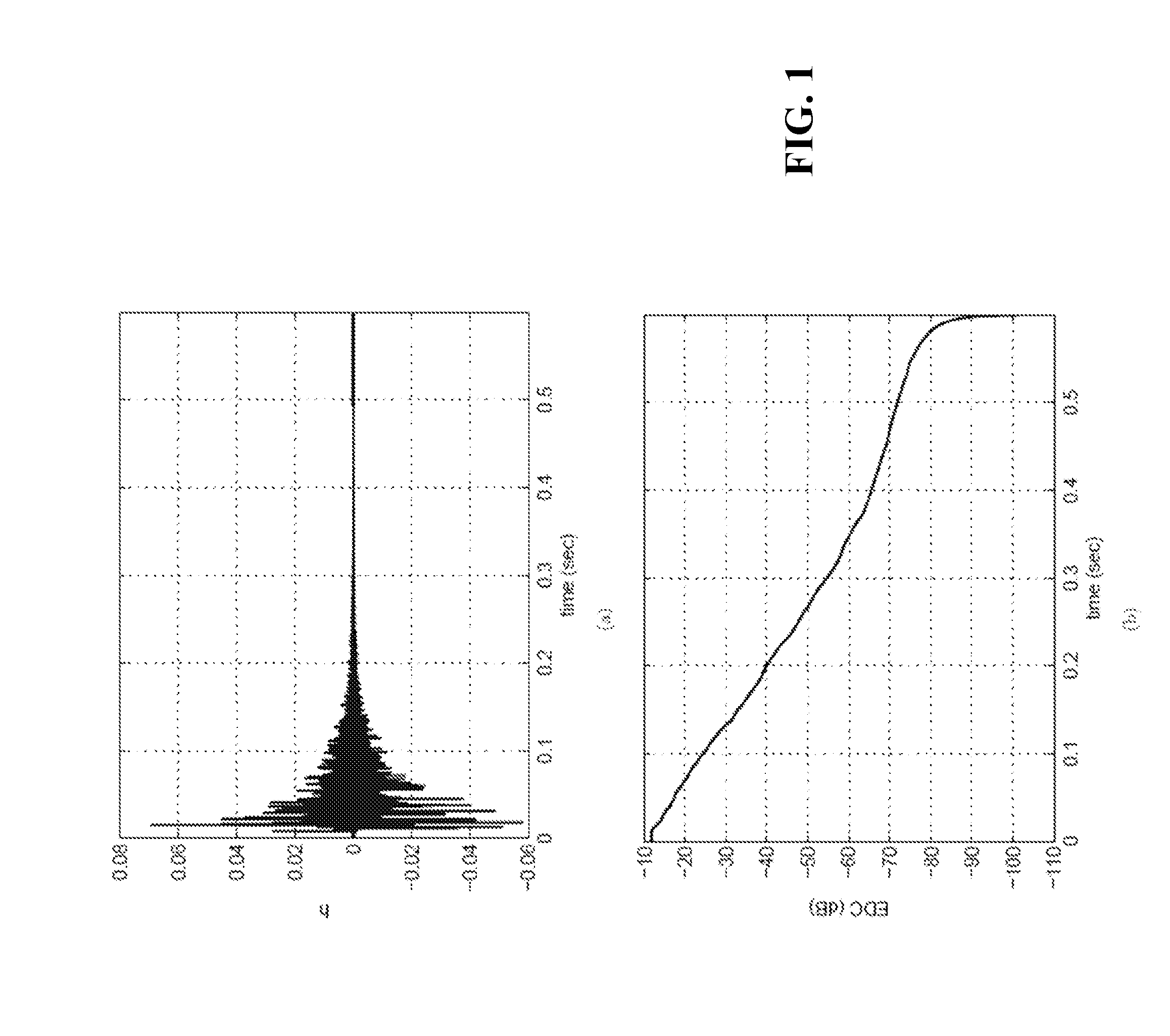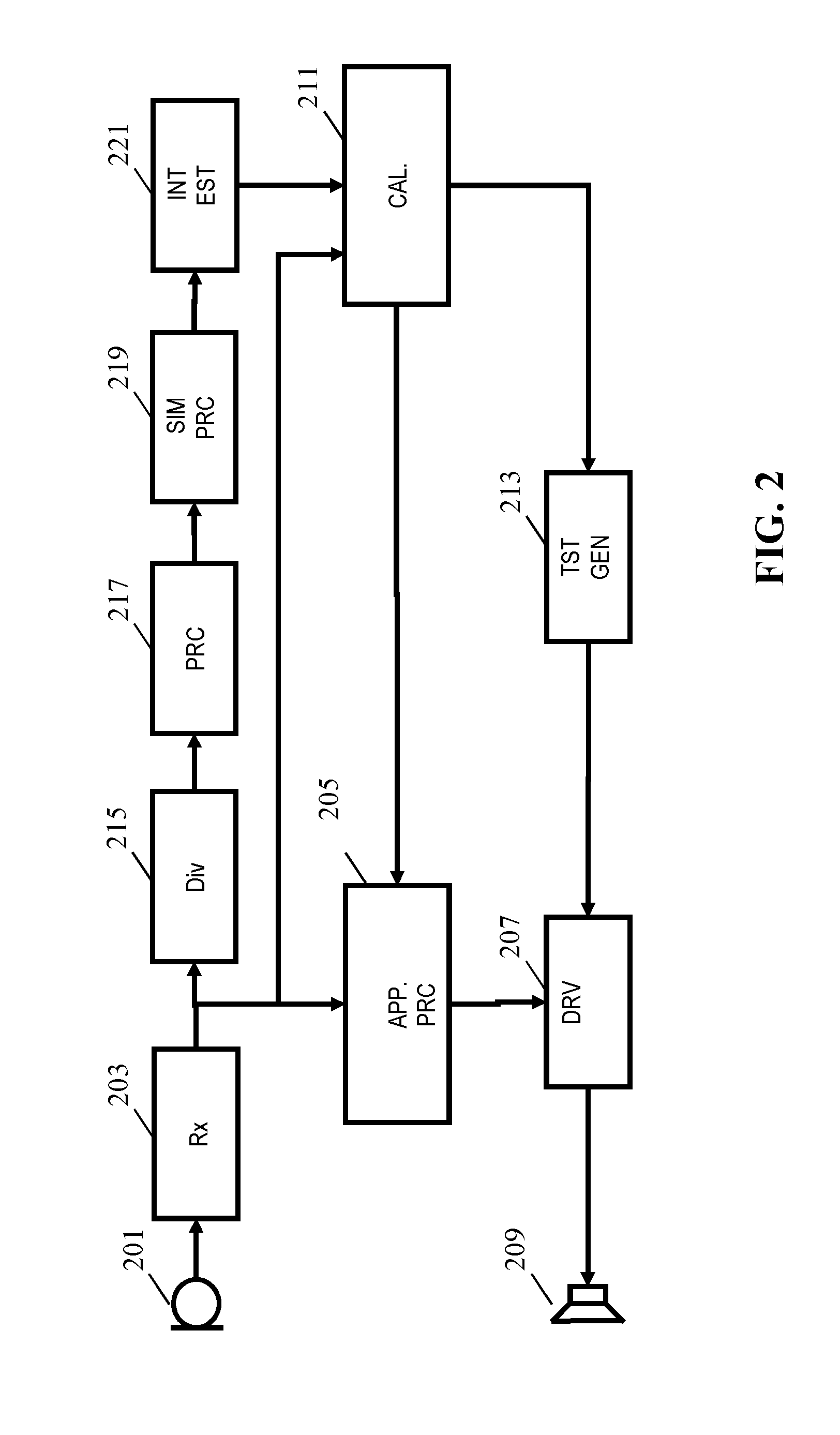Method and apparatus for audio interference estimation
a technology for audio interference and estimation, applied in the direction of electrical transducers, transducer details, transducer acoustic reaction prevention, etc., can solve the problems of inability to tune/adapt/calibrate during production, speech and noise local interference can be present, and the system performance can degrade, etc., to achieve improved and/or facilitated determination of audio interference measures, reliable detection, and low complexity
- Summary
- Abstract
- Description
- Claims
- Application Information
AI Technical Summary
Benefits of technology
Problems solved by technology
Method used
Image
Examples
Embodiment Construction
[0056]The following description focuses on embodiments of the invention applicable to generate an audio interference estimate for an audio processing adaptation application, but it will be appreciated that the invention is not limited to this application but may be applied to many other audio applications.
[0057]FIG. 2 illustrates an example of an audio processing system in accordance with some embodiments of the invention.
[0058]The audio system comprises a microphone 201 which is arranged to capture the sound in an acoustic environment. The microphone signal generated by the microphone 201 may specifically represent the sound in a room as captured at the position of the microphone 201.
[0059]The microphone 201 is coupled to a receiver 203 which receives the microphone signal. In most embodiments, the receiver 203 may comprise amplification, filtering and possibly an analog to digital converter providing a digitized version of the microphone signal thereby allowing the subsequent proc...
PUM
 Login to View More
Login to View More Abstract
Description
Claims
Application Information
 Login to View More
Login to View More - R&D
- Intellectual Property
- Life Sciences
- Materials
- Tech Scout
- Unparalleled Data Quality
- Higher Quality Content
- 60% Fewer Hallucinations
Browse by: Latest US Patents, China's latest patents, Technical Efficacy Thesaurus, Application Domain, Technology Topic, Popular Technical Reports.
© 2025 PatSnap. All rights reserved.Legal|Privacy policy|Modern Slavery Act Transparency Statement|Sitemap|About US| Contact US: help@patsnap.com



